Introduction to git
Meeting notes for introduction to git Oct 1st
- Talked about our current issues
- Talked about the article Reproducible Programming for Biologists Who Code. Part 1: Must do
- Version control
- Recording data access
- Actions for next meeting
- Resources
Talked about our current issues
- Orian dealing with different versions of scripts. Figuring out Git
- Yanwei dealing with multiple files/threshold to test with GSEA
- An dealing with broken conda environment, cannot install packages
Talked about the article Reproducible Programming for Biologists Who Code. Part 1: Must do
Version control
Showed the .snapshot folder on Whitehead’s corradin_data (corradin_biobank and corradin_cache are not backed up)
War stories
-
Created multiple versions of a file and forgetting what they do
-
Change one file and don’t know if the other files in a pipeline still work or not, extremely afraid to make any changes. Need to test multiple versions of a step in a pipeline
-
Inheriting a script from someone else, want to make changes => create different functions
function_x,function_x_an -
Every time create a new feature, duplicate the old file and then add new feature to the new file. Finally, MANUALLY MERGE BY EYE to see which line changed between the new file and the old one to copy and paste back into the old file
-
The need to maintain two versions of a script concurrently: development/experiment and production.
-
Accidentally delete files and have to rely on backups by IT, which might not be fine-grained enough to save changes between two backups.
-
Jupyter froze and did not save code => have to rewrite code
Introducing git
Barebones, layman definition

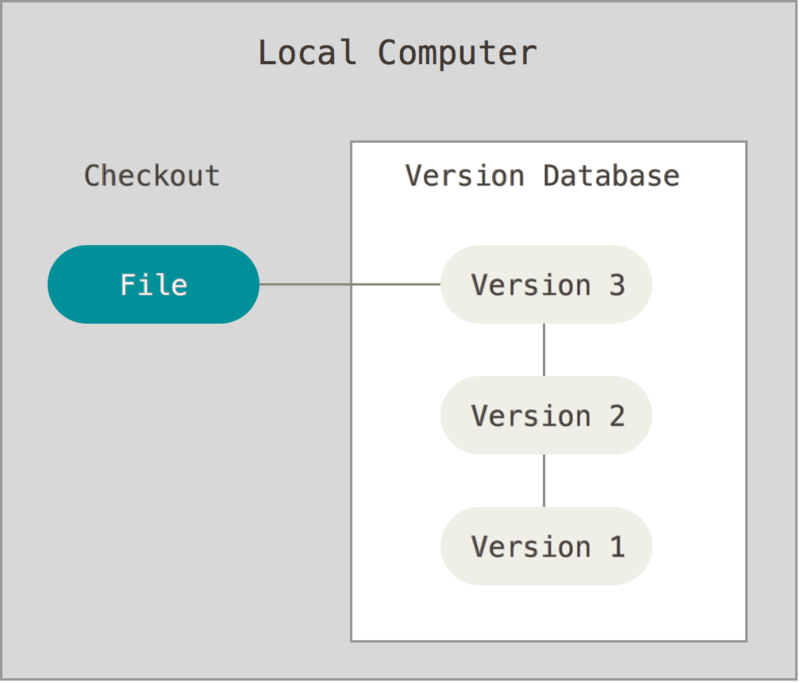
-
gitis like the.snapshotfolder storing backup of different versions for you only.githubis like Google Drive, where you share your code/files with other people.- If you work alone, on the same machine, git is enough
- If you work alone, on different machines, use git to backup on your local machine, then push to Github
- If you work with other people, push to Github as above
- Fundamental unit: a
commit. Committing changes is like saving a checkpoint/version to go back to in video games.
Read more:
- https://git-scm.com/book/en/v2/Getting-Started-About-Version-Control
- https://coderefinery.github.io/git-intro/01-motivation/
- https://kbroman.org/github_tutorial/pages/why.html
5 “locations” your file goes through
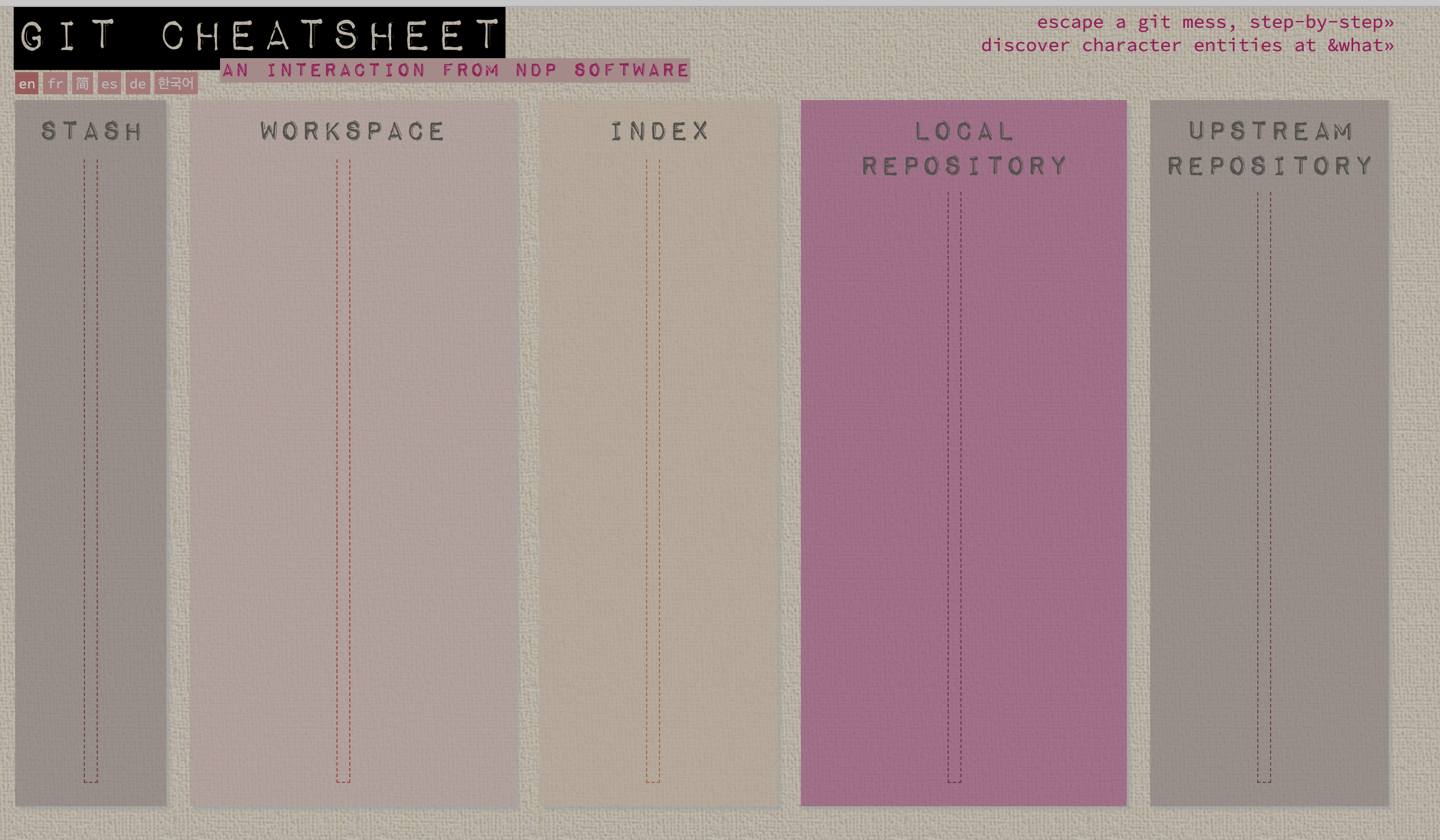
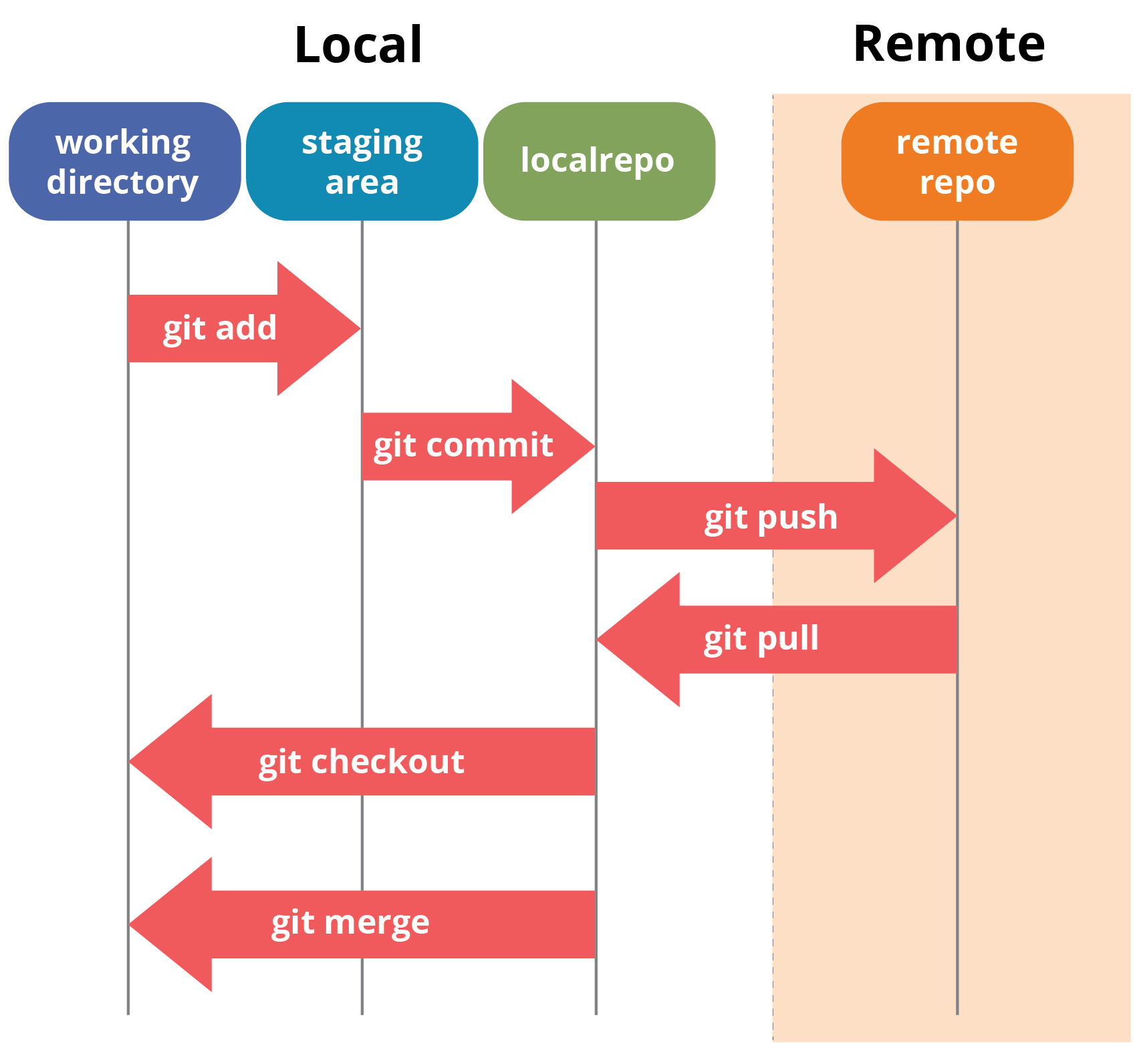
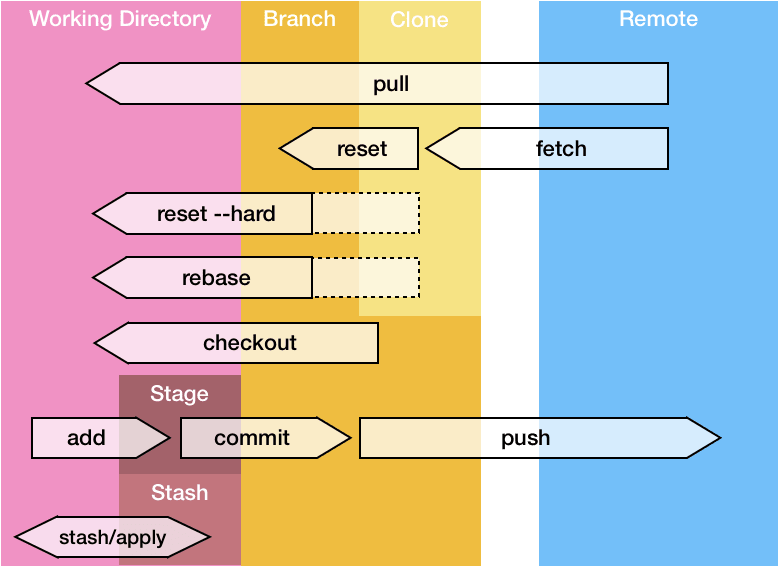
-
Stash: save your changes temporarily in a stack (eg. a change that is not final enough to be a commit). Kind of like
Ctrl + Z, although you get to define how much work/code is restored each time. You can reapply your changes from the most recent save to the oldest one -
Workspace: Your active working space, files you create will go here. Files that don’t have changes since last commit will go here. Once you added/committed a file, Git tracks the status of that file and tell you (unchanged, uncommitted change)
-
Index/Staging area: Think of it as a loading dock. If your
commitis like a shipment, and yourfile changesare like individual packages then yourindex/staging areais where you bundle those changes (could be from one or many different files) into one shipment.Once you have commited the changes/save your check point/sent off the shipment, these changes are always bundled together. Going back to the checkpoint will load changes up until that commit/version
-
Local repository: Your
.gitfolder in the same location that saves all your versions -
Upstream/Remote repository: Where you upload your files onto the internet/cloud. This can be Github, Bitbucket, AWS or sites that can store your data for a fee
4 status of file
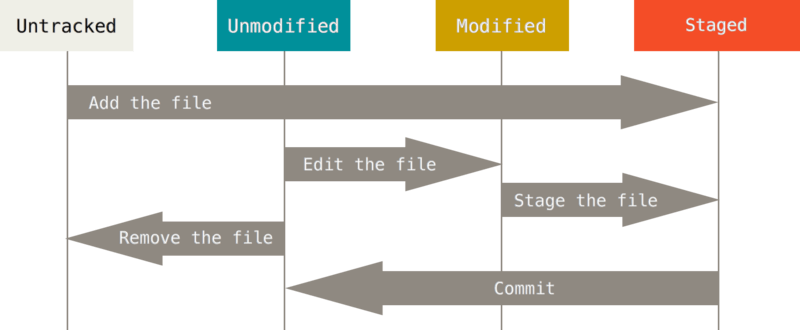
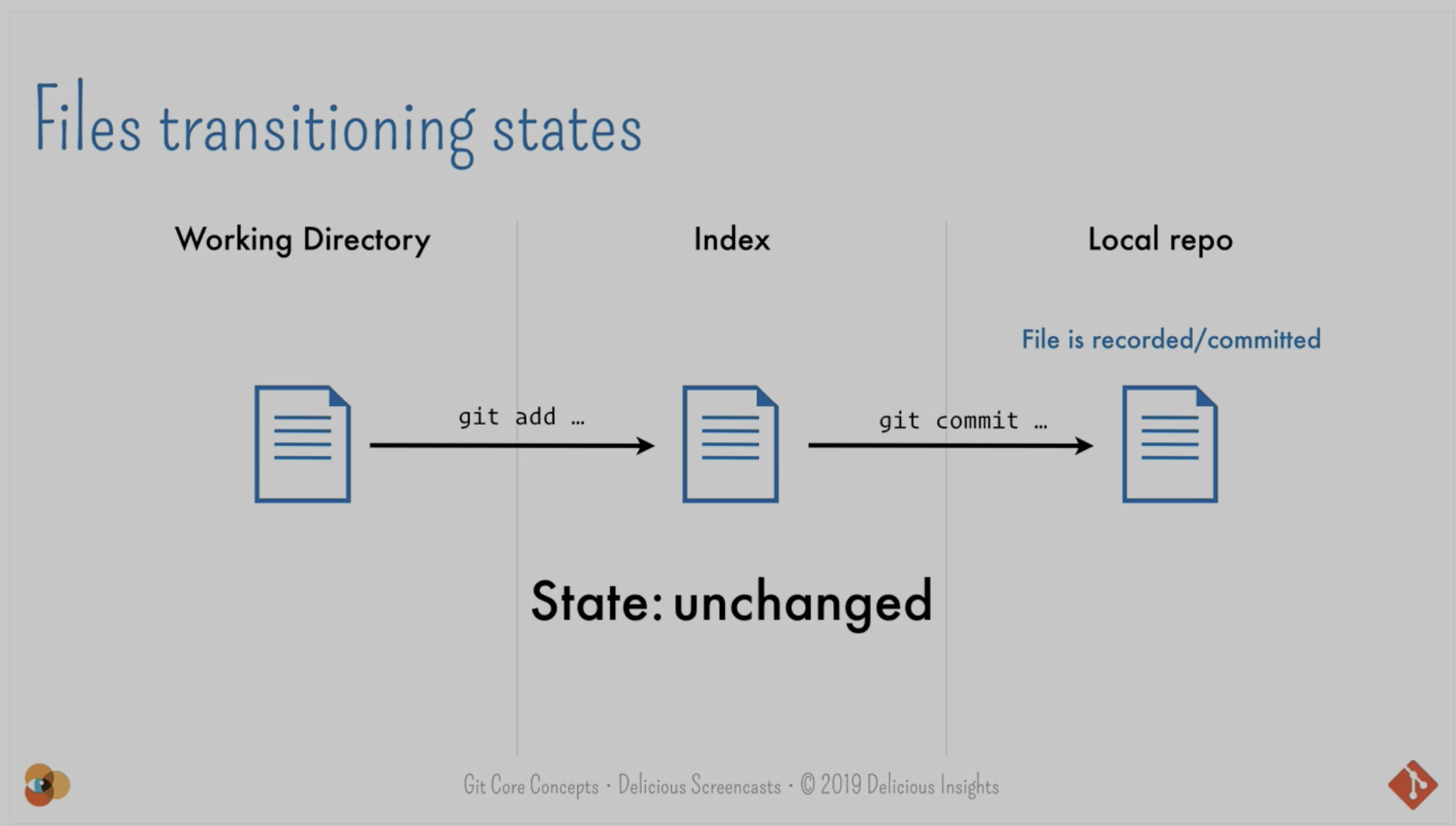
Read more:
- https://ilearnthis.com/a/git-file-status-lifecycle/
- https://screencasts.delicious-insights.com/courses/git-core-concepts
Tying the two concepts together

Recording data access
- Save the command to download the data (UKBiobank, outside dataset)
- Record the download/access date or version of the dataset
- How to link data artifact to code? DVC #future
- Catalog of data for each project and their metadata Intake
Actions for next meeting
## Everyone
- Learn about git commands from the resources below : add, commit, push, merge, branch, checkout, pull
- Check out all resources in the shared section (they are short, visual and helpful) and one in optional section
## An
- Design git/github activity (fork, pull request, branch)
- Prepare more materials on git workflow for data analysis (how often to commit, when to commit etc, branching, visualizing git)
- Find resources for git + Jupyter, git submodules/changing folder structure
- Find resources about python package management (conda + pip + Docker)
- Example of self-created packages: need to use
utils.pyin the opioid projects for MAG, but cannot because the environment is different (mag-aging-aidoesn’t have/doesn’t needhdbscanfor example) - Do nbdev/fastpage tutorial
Resources
Shared
Cheatsheets
- git - the simple guide - no deep shit!
- Git: Cheat Sheet (advanced), Maxence Poutord
- Interactive Git Cheatsheet
- Flowchart for when getting stuck
- Oh Shit, Git!?!
Learning resources
- GitHub Guides (In order: Git Handbook,Understanding the Github flow, Hello world, Forking projects)
- Resources to learn Git (Git-It section)
Pick one (and explore as many as you’d like):
- Git Immersion
- Introduction to version control with Git - Git introduction
- Version Control with Git
- git/github guide
- 🐙 Git series 1/3: Understanding git for real by exploring the .git directory · daolf
Extra resources (Ignore below if you’re not An):
Extra Git learning resources
- A Visual Git Reference
- Learn Git Branching
- git ready » learn git one commit at a time
- Git, Martin Zlámal 🤓
- Git power tools for daily use » nvie.com
- nvie/git-toolbelt: A suite of useful Git commands that aid with scripting or every day command line usage
- The Thing About Git
- Git - Recording Changes to the Repository